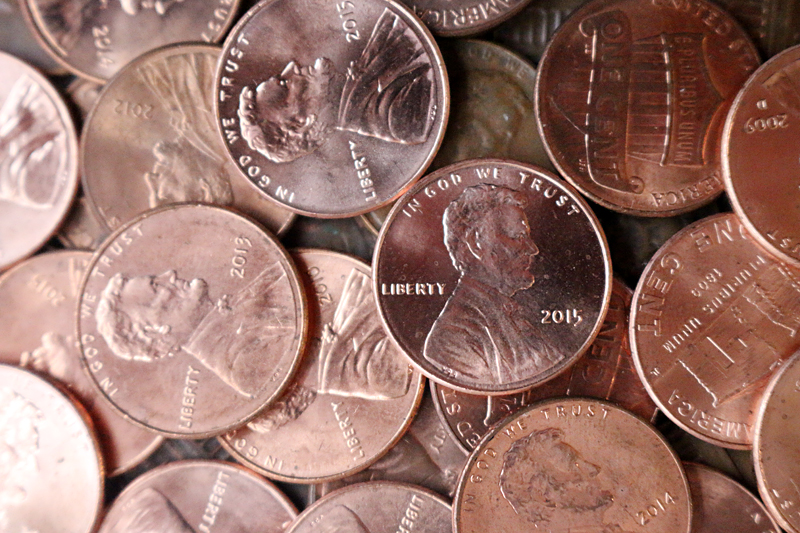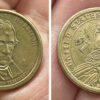The Bahamas is the latest country to phase out its one-cent coin from circulation — which is expected to occur on Thursday, December 31, 2020 — as a result of the denomination reportedly has outlived its usefulness.
Does Eliminating the Penny Make Cents?
Fewer countries still issue pennies, one-cent coins, or their economic equivalents — and the United States is one of them — and nickels and other economic equivalents of the five-cent coins are also in the cross hairs of elimination. “In the last couple of decades, a multitude of nations have eliminated low-denomination coinage, including Australia, Brazil, Canada, Denmark, Ireland, Norway, Sweden, South Africa, and Trinidad and Tobago. And Japan appears to be doing so, as well”, according to this article written by Joshua McMorrow-Hernandez of CoinWeek. “Meanwhile, the Bahamas one-cent coin has seen its purchasing power diminish by 90% since first being issued in 1966, yet it now costs 1.04 cents — more than the coin’s face value — to produce and distribute.”
According to this collaborative study by both the Central Bank of the Bahamas and Secura Monde International, “…only about half of the population (52%) regularly uses the 1-cent coin for making payments. This share is much lower (40%) for the younger consumers (age 16-34), likely related to generally lower usage of cash for payments in this age group. Over three quarters (78%) of the consumers never or rarely return accumulated 1-cent coins to the banks or post offices. Only about a third (39%) of the retailers and the banks regularly receive 1-cent coins in the course of their business. There is a clear concern over the cost of handling 1-cent coins; a significant majority (61%) of businesses estimates it to be equal or higher than the face value of the coin.”
The Rounding System Proposed For the Bahamas
With the elimination of the penny in Bahamas to occur next year, if you use credit cards, debit cards, checks and other means of paying without cash, the total bill of sale will remain exactly the same, as the absence of the penny will not cause the total bill of sale to be rounded up or rounded down.
When the total bill is being paid in cash and the number of cents to be paid does not end in zero or five — thus requiring either the customer to use 1-cent coins in payment or the retailer to use such coins in giving change — the amount of change to be paid will be rounded to the nearest 5 or 10 cents:
- 1 and 2 would be rounded down to zero — for example, $4.21 becomes $4.20
- 3 and 4 would be rounded up to 5 — for example, $7.23 becomes $7.25
- 6 and 7 would be rounded down to 5 — for example, $15.67 becomes $15.65
- 8 and 9 would be rounded up to 10 — for example, $27.89 becomes $27.90
Past Attempts to Eliminate the Penny in the United States
As I first reported in this article on Friday, January 8, 2016, Philip Diehl wants to eliminate the penny — and he attempted to do just that during his time when he was the director of the United States Mint from June of 1994 through March of 2000 — and he is not the only person who believes that the penny is obsolete, according to this article written by Tom DiChristopher of CNBC.
Jim Kolbe — a former Republican member of the United States House of Representatives who represented the fifth congressional district in Arizona — also unsuccessfully tried to abolish the penny by congressional action in 2001 and 2006.
The penny cost 1.8 cents to produce in 2016 — which at that time was almost twice as much as it is actually worth — and the United States Mint loses tens of millions of dollars each year as a result simply from producing pennies.
Those who are opposed — such as members of Americans for Common Cents, for example, which claimed that approximately 68 percent of Americans still favor keeping the penny — claim that the proposed elimination the penny will cause prices to be distorted; and perhaps even create mild inflation.
Does it make cents for the United States to become penniless, so to speak?
Canada Eliminated Its Penny
As I first reported in this article, Friday, May 4, 2012 was the last day on which the Canadian penny was minted; and Monday, February 4, 2013 was the last day it was distributed — although with greater than 30 billion of them currently in use, they are expected to be around in circulation for a little while longer.
The Canadian government expected to save $11 million per year by no longer minting the penny, which cost 1.6 cents to produce — and which made a lot of cents to the Canadian government.
Businesses had reportedly been asked to return pennies to financial institutions so that the coins can be melted down and their metal content recycled.
Canada is apparently far from the first country to abolish the penny. Sweden, New Zealand, Finland, Australia, the Netherlands and Norway supposedly eliminated pennies with no public outcry and no noticeable effect on inflation.
The Rounding System in Canada
With the elimination of the penny in Canada, if you use credit cards, debit cards, checks and other means of paying without cash, the total bill of sale will remain exactly the same, as the absence of the penny will not cause the total bill of sale to be rounded up or rounded down.
If you happen to be purchasing an item using cash to pay for goods and services in Canada and the total bill of sale — including any taxes — ends in a number other than one or five, what you will actually pay will be either rounded up or rounded down as follows in the list below:
- If the total bill of sale is $1.00, you pay $1.00 — nothing changes
- If the total bill of sale is $1.01, you pay $1.00 — you save one extra cent
- If the total bill of sale is $1.02, you pay $1.00 — you save two extra cents
- If the total bill of sale is $1.03, you pay $1.05 — you pay two extra cents
- If the total bill of sale is $1.04, you pay $1.05 — you pay one extra cent
- If the total bill of sale is $1.05, you pay $1.05 — nothing changes
- If the total bill of sale is $1.06, you pay $1.05 — you save one extra cent
- If the total bill of sale is $1.07, you pay $1.05 — you save two extra cents
- If the total bill of sale is $1.08, you pay $1.10 — you pay two extra cents
- If the total bill of sale is $1.09, you pay $1.10 — you pay one extra cent
- If the total bill of sale is $1.10, you pay $1.10 — nothing changes
Had Canadians Already Made Up Their Minds?
Some FlyerTalk members believe that not only should the penny have been abolished in Canada a long time ago, but they also believe that the nickel should face a similar fate of extinction. Coin-cidentally, the Canadian penny contains approximately 1.5 percent nickel, so I suppose that is a start.
“A number of concerns were voiced at the time the elimination of the one-cent coin was first put forth. Among them were the suggestion that prices would go up, since rounding to the nearest five cents would not always push them higher; that demand for the other coins would surge; that the precision of financial transactions would decline; and that Canada would lose part of its heritage”, according to this article written by Don Curren of The Wall Street Journal, which questioned indeed whether or not the Canadian nickel should be eliminated next, as New Zealand had already done.
“Instead, it’s been a positive and even cost-saving move” which resulted in getting “rid of something that was useless and cost about 150 million Canadian dollars a year ($135.5 million) to produce” and where not only “consumers are no longer collecting pennies in all sorts of containers, at home and elsewhere,” but also that “consumers, retailers and financial institutions no longer need to handle billions of the one-cent coins every year.”
Would the Penny Be Worth More Once Minting Has Stopped?
If you believe that the Canadian penny will be worth more due to its production being ceased, I would think again: the 1943 “white” penny of the United States was made of steel and coated in zinc because there was a shortage of copper, which was needed for use during World War II. Ironically — or, should I say, steel-ically — the pennies from 1943 which were made from copper are substantially more valuable because there are significantly fewer of them than the “white” penny, which can be worth as little as 50 cents.
Do the math: 1943 was 76 years ago — and there are fewer “white” pennies in existence than there are Canadian pennies. I am not a professional numismatist; but assuming that the Canadian penny increases in value at the same rate as the 1943 “white” penny in the United States, that is an increase in value of not even one penny per year for each penny. There is no basis for my comparison, to be sure; all I am saying is do not hold your breath hoping that the Canadian penny will appreciate in value significantly enough in your lifetime to be worth holding on to it.
Summary
Interestingly, rounding already occurs in the United States on a voluntary basis. I have seen both customers letting merchants keep the change if it is a couple of cents; while retailers occasionally will give the customer a one-penny or two-penny break while saying “Don’t worry about it” — and that was about to happen to me last week at a supermarket when I found a penny in my pocket. I am not certain, however, that the United States is ready to officially eliminate the penny just yet, although I have heard discussion about it for years now…
…but if the penny is indeed eliminated, does that mean that a hotel room cannot be sold for a night for one penny anymore? What about a frequent flier loyalty program mile being worth one penny — would that cease to exist as well? When FlyerTalk members decided to undertake a “mileage run”, will the calculation of three cents per mile be rounded up to five cents per mile?
Of course, I ask those questions in jest — but I will coin a phrase in the form of a question while I can still ask it: how about a penny for your thoughts?
Photograph ©2016 by Brian Cohen.

